September is Baby Safety Month, and we wanted to equip parents with tips to keep their baby safe while introducing solid foods. One common weaning worry for parents is the possibility of their baby choking. Learn how to tell the difference between baby gagging and choking, the safe steps to take in each situation, and ways to reduce your baby’s choking risk.
Introducing your baby to solid foods is an exciting milestone, but it can also bring anxiety. When starting to feed baby solid foods, one of parents' biggest worries is the possibility of baby choking (especially if they’ve chosen to do baby-led weaning).
But often, it's hard for parents to tell the difference between choking, which is dangerous, and gagging, which is a normal part of the weaning process.
Today, we'll break down the differences between gagging and choking in babies, and offer tips on how to reduce your baby's risk of choking.
What is gagging?
Gagging is a perfectly normal part of the weaning process. In fact, gagging is the natural way your baby's body protects itself from choking.
Your baby’s gag reflex is actually farther forward in the mouth when you start feeding them solids, to better protect them from choking. (It will move back as baby gets older.) So, coughing, gagging and expelling food will be common during the first few months of weaning.
Eating solid foods is a new skill for your baby to learn---it takes practice. Your baby may gag a lot, but that’s just their body keeping them safe as they learn.
What does gagging look and sound like?
- When baby is gagging, they will loudly cough, sputter, gurgle, and make gagging noises.
- Their tongue will thrust forward, and they’ll expel (spit up) the food they were eating.
- Sometimes, they’ll vomit the food up.
Remember: gagging is normal, even if your baby vomits. Don’t intervene!
What is choking?
Choking, on the other hand, is a sign that your baby’s airway is blocked. A piece of food has partially or fully blocked their windpipe, and their gag reflex didn’t successfully force it out to protect them. Choking means your baby is in danger, and it could be life-threatening.
What does choking look and sound like?
- If baby is choking, they’ll be quiet or silent.
- They’ll have trouble coughing (or won’t cough at all).
- They’ll also have trouble breathing.
If baby is choking, they’ll need immediate assistance from you!
Gagging vs. Choking: What to do?
How can you tell the difference between gagging and choking? What should you do in each situation? Use this rhyme to help you remember: "Loud and red, let them go ahead. Silent and blue, they need help from you."
"Loud and red, let them go ahead. Silent and blue, they need help from you."
Let's break down the differences between gagging and choking in detail:
Loud and red=gagging: let baby work it out.
- When a baby is gagging, their face will often go red.
- Baby will open their mouth and their tongue will thrust forward.
- You'll hear them sputter, cough, gurgle, or gag, because their heightened gag reflex is helping to keep them safe.
- Baby might even vomit: another natural defense against choking.
- Don’t intervene: let the baby work through the gagging on their own. If you try to remove the food, you could push it back further and lodge it in their throat. This will make things worse, and may even lead to choking.
Silent and blue=choking: baby needs your help immediately!
- When a baby is choking, their face and lips will usually turn blue.
- They won't be able to cry.
- They'll usually have trouble making other noises, and may be completely silent.
- They will have trouble coughing, or may not be able to cough at all.
- (If they can cough a bit, this is a good sign: the blockage is only partial, and they're trying to clear the passage.)
- They'll usually have trouble breathing (listen for high-pitched sounds when breathing).
- If you see these signs, baby is choking and will need immediate assistance from you.
- Perform baby CPR to stop the choking.
Learn more about how to identify signs of choking and how to help an infant who is choking in this video:
Before you start the weaning process, be prepared to help your baby out if they choke! CPR guides are available online, but taking a baby CPR class from a certified instructor is always best. The Red Cross and American Heart Association offer CPR classes online and in person.
Here's our guide for parents to understand the difference between gagging v. choking:

Reduce baby’s choking risk during weaning
What can you do to keep baby safe during weaning, and reduce their choking risk? Follow these six rules:
Look for these signs of readiness: your baby should be able to hold their head and neck steady for an extended period of time, and sit up with minimal support.
That way, you’ll know how your baby is progressing through the weaning process, and be able to intervene quickly if they’re choking.
Eating while walking may increase baby’s risk of choking.
It’s fine to start weaning by feeding baby pureed foods, but be sure to feed baby diverse textures of foods, especially as baby gets older and more confident with eating solids.
Feeding baby smooth, mashed, thick and lumpy textures encourages your baby to develop their munching and chewing skills, properly chew a variety of foods, and thus reduce their risk of choking. The AAP recommends this approach because munching and chewing are learned, not innate behaviors. Babies naturally know how to suckle and suck, but they need practice to develop munching and chewing reflexes.
Follow these food prep tips to reduce choking risk, especially if you’re doing baby-led weaning:
- Stick to softer foods.
- Cook hard vegetables, such as carrots, to soften them.
- Cut fruits, vegetables, meats and cheeses into long, thin strips. This both helps prevent choking and makes these foods easier for baby to pick up and manage.
Avoid choking hazards, including hard, round, and chunky foods. Here are some examples of foods to avoid feeding your baby:
- Hard, uncooked vegetables, such as carrots
- Pretzels
- Popcorn
- Whole nuts
- Any other hard foods
- Whole (uncut) grapes
- Whole (uncut) cherry tomatoes
- Whole meatballs
- Chunky nut butters
- Any nut butter that isn’t watered down
Also, according to AAP recommendations, you should avoid giving your baby foods that are larger than ½ inch in size. So, make sure to cut up any foods like strawberries.
A note on introducing peanuts safely:
While the USDA Dietary Guidelines recommends to “introduce infants to potentially allergenic foods”, they also caution parents against introducing certain forms of peanut to your baby as “nuts, chunks of peanut butter..can be a choking risk.” Peanuts pose one of the greatest choking hazards if they aren’t prepared properly. Even most peanut butters are difficult to prepare safely. Fortunately, Ready. Set. Food! makes introducing peanut, plus egg and milk, easy and safe for babies at this age, with no choking risk.
Only Ready. Set. Food! dissolves completely into baby’s bottle of breastmilk or formula. So, you can introduce peanut, egg and milk to your baby safely, and not have to worry about choking, even if your baby isn’t yet ready for solid foods.
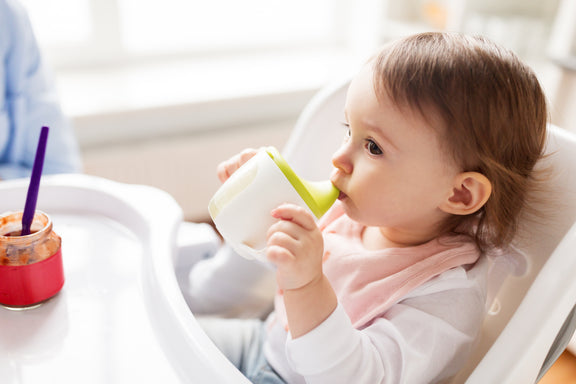
Pros And Cons Of Sippy Cups
Thinking about giving your little one a sippy cup? Today, we’ll co...
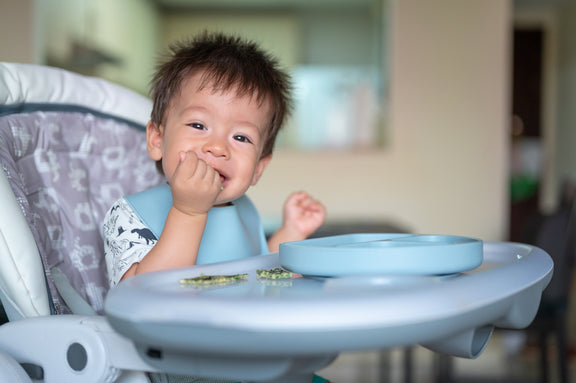
What Toddlers Eat In A Day: 12-18 Months Old
Looking for ideas of what to feed your 12-18 month old little one? ...
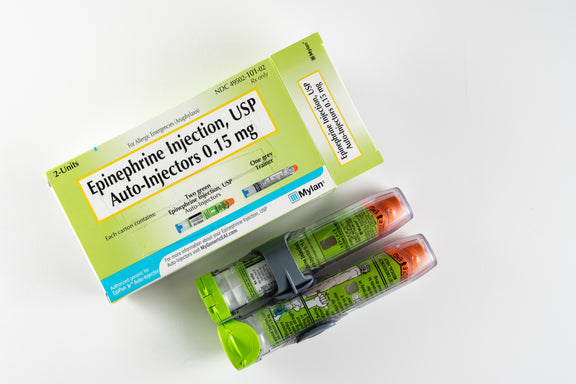
New Study Shows That Infant Anaphylaxis Usually Resolves With One Epinephrine Dose
A recent study has shown that, when infants experience severe aller...
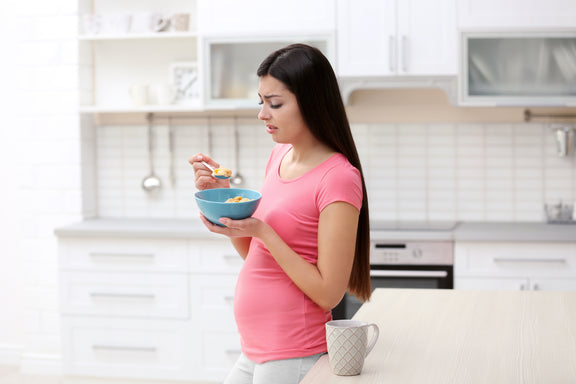
Pregnancy Nutrition: What To Eat In The First Trimester
What to eat in the first trimester that will nourish your body, pro...

Formula Feeding Amounts: How Much Formula Should You Feed Baby Per Day?
How much formula should baby drink per day? It depends on their age...
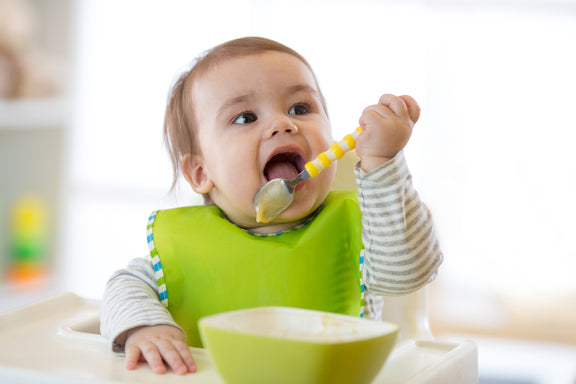
What Baby Eats In A Day: 6-12 Months Old
Looking for ideas of what to feed your 6-12 month old little one? H...
All health-related content on this website is for informational purposes only and does not create a doctor-patient relationship. Always seek the advice of your own pediatrician in connection with any questions regarding your baby’s health.
These statements have not been evaluated by the Food and Drug Administration. Products are not intended to diagnose, treat, cure or prevent any disease. If your infant has severe eczema, check with your infant’s healthcare provider before feeding foods containing ground peanuts.

